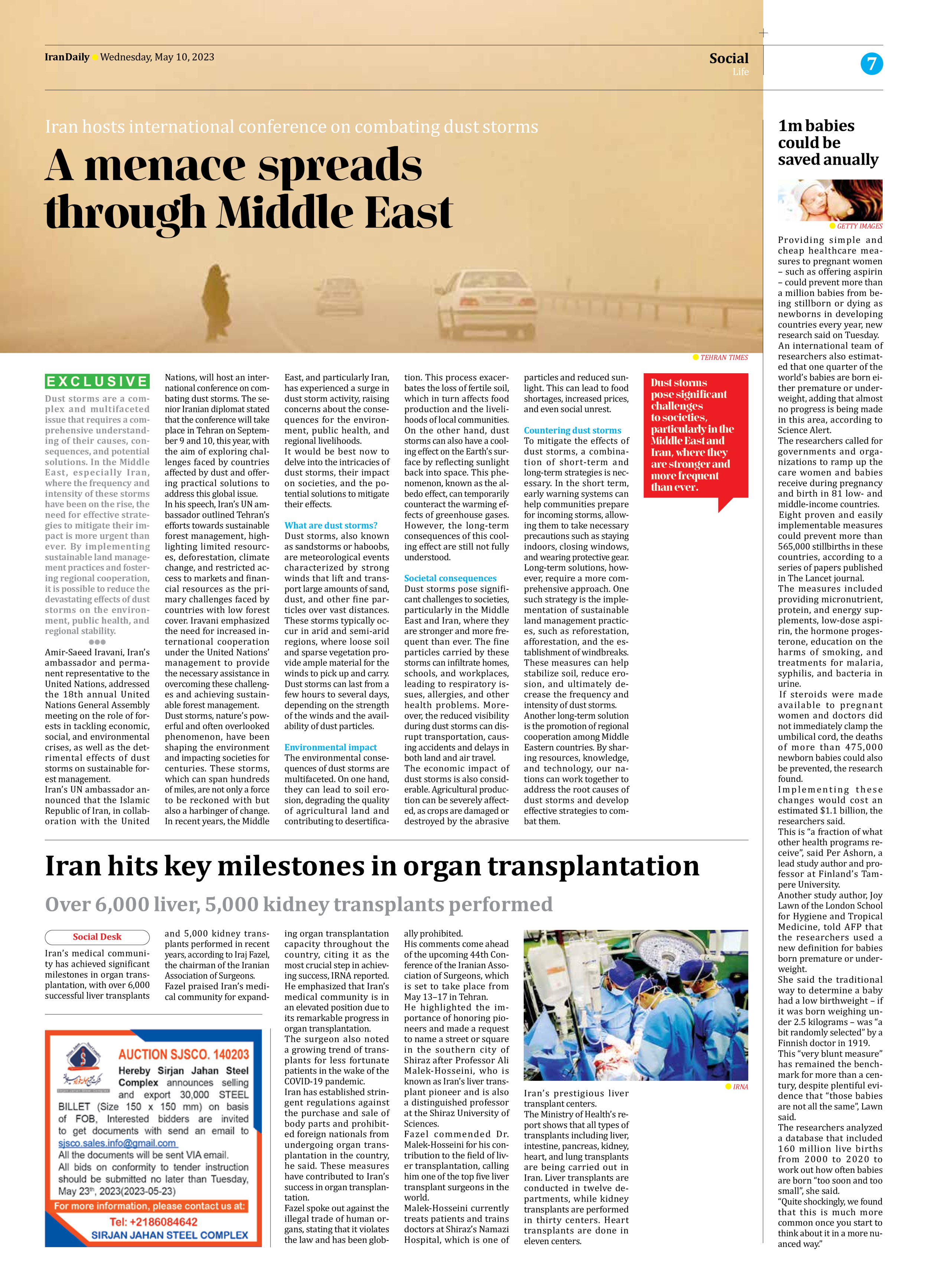
Iran hosts international conference on combating dust storms
A menace spreads through Middle East
Dust storms are a complex and multifaceted issue that requires a comprehensive understanding of their causes, consequences, and potential solutions. In the Middle East, especially Iran, where the frequency and intensity of these storms have been on the rise, the need for effective strategies to mitigate their impact is more urgent than ever. By implementing sustainable land management practices and fostering regional cooperation, it is possible to reduce the devastating effects of dust storms on the environment, public health, and regional stability.
●●●
Amir-Saeed Iravani, Iran’s ambassador and permanent representative to the United Nations, addressed the 18th annual United Nations General Assembly meeting on the role of forests in tackling economic, social, and environmental crises, as well as the detrimental effects of dust storms on sustainable forest management.
Iran’s UN ambassador announced that the Islamic Republic of Iran, in collaboration with the United Nations, will host an international conference on combating dust storms. The senior Iranian diplomat stated that the conference will take place in Tehran on September 9 and 10, this year, with the aim of exploring challenges faced by countries affected by dust and offering practical solutions to address this global issue.
In his speech, Iran’s UN ambassador outlined Tehran’s efforts towards sustainable forest management, highlighting limited resources, deforestation, climate change, and restricted access to markets and financial resources as the primary challenges faced by countries with low forest cover. Iravani emphasized the need for increased international cooperation under the United Nations’ management to provide the necessary assistance in overcoming these challenges and achieving sustainable forest management.
Dust storms, nature’s powerful and often overlooked phenomenon, have been shaping the environment and impacting societies for centuries. These storms, which can span hundreds of miles, are not only a force to be reckoned with but also a harbinger of change. In recent years, the Middle East, and particularly Iran, has experienced a surge in dust storm activity, raising concerns about the consequences for the environment, public health, and regional livelihoods.
It would be best now to delve into the intricacies of dust storms, their impact on societies, and the potential solutions to mitigate their effects.
What are dust storms?
Dust storms, also known as sandstorms or haboobs, are meteorological events characterized by strong winds that lift and transport large amounts of sand, dust, and other fine particles over vast distances. These storms typically occur in arid and semi-arid regions, where loose soil and sparse vegetation provide ample material for the winds to pick up and carry. Dust storms can last from a few hours to several days, depending on the strength of the winds and the availability of dust particles.
Environmental impact
The environmental consequences of dust storms are multifaceted. On one hand, they can lead to soil erosion, degrading the quality of agricultural land and contributing to desertification. This process exacerbates the loss of fertile soil, which in turn affects food production and the livelihoods of local communities.
On the other hand, dust storms can also have a cooling effect on the Earth’s surface by reflecting sunlight back into space. This phenomenon, known as the albedo effect, can temporarily counteract the warming effects of greenhouse gases. However, the long-term consequences of this cooling effect are still not fully understood.
Societal consequences
Dust storms pose significant challenges to societies, particularly in the Middle East and Iran, where they are stronger and more frequent than ever. The fine particles carried by these storms can infiltrate homes, schools, and workplaces, leading to respiratory issues, allergies, and other health problems. Moreover, the reduced visibility during dust storms can disrupt transportation, causing accidents and delays in both land and air travel.
The economic impact of dust storms is also considerable. Agricultural production can be severely affected, as crops are damaged or destroyed by the abrasive particles and reduced sunlight. This can lead to food shortages, increased prices, and even social unrest.
Countering dust storms
To mitigate the effects of dust storms, a combination of short-term and long-term strategies is necessary. In the short term, early warning systems can help communities prepare for incoming storms, allowing them to take necessary precautions such as staying indoors, closing windows, and wearing protective gear.
Long-term solutions, however, require a more comprehensive approach. One such strategy is the implementation of sustainable land management practices, such as reforestation, afforestation, and the establishment of windbreaks. These measures can help stabilize soil, reduce erosion, and ultimately decrease the frequency and intensity of dust storms.
Another long-term solution is the promotion of regional cooperation among Middle Eastern countries. By sharing resources, knowledge, and technology, our nations can work together to address the root causes of dust storms and develop effective strategies to combat them.







